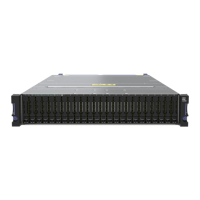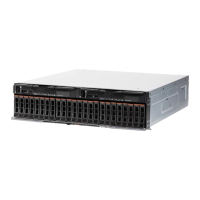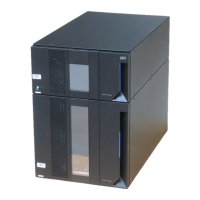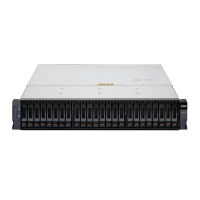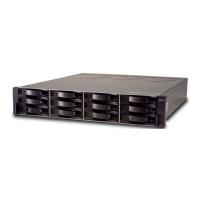collectively
as
the
card-resident
control
programs.
For
tape-resident
systems,
the
IPL
is
a
separate
program,
but
the
Basic
Monitor
and
Job
Control
programs
are
coupled
together
for
distribution
purpose
and
known
as
the
tape-resident
control
programs.
I.nitial_grog!:E!!L1.QadeLllPLl.
The
IPL
is
used
to
load
the
Basic
Monitor
program
into
main
storage
from
cards
or
from
the
system
tape,
respectively.
Bas:!..f Moni
t~Pr.Q:.su;:am
•
The
Basic
Monitor
is
the
main
control
program.
The
card
Basic
Monitor
is
used
to
control
the
load-
ing
and
execution
of
object
programs
con-
tained
in
punched
cards.
It
is
also
used
to
control
the
building
of
a
tape-resident
system.
The
tape
Basic
Monitor
controls
the
loading
and
execution
of
(1)
programs
contained
in
the
program
library
of
the
tape-resident
sjstem,
(2)
executable
object
programs
stored
on
tape
in
card-image
for-
mat
g
and
(3)
executable
object
programs
contained
in
punched
cards.
Th,SL.Job_Contrgl
Program.
The
Job
Control
program
is
loaded
into
main
storage
by
the
Basic
Monitor.
It
prepares
each
individual
program
for
execution
under
control
of
the
Basic
Monitor.
The
Job
Control
program
operates
between
jobs
only.
It
is
not
in
main
storage
during
the
execution
of
a
program.
The
System
Service
programs
comprise
the
Load
System
Tape
program,
the
Copy
System
Tape
program,
the
Linkage
Editor
program,
and
the
Library
Management
programs.
XR~_~Q9:,L~ystgm
Tii,2g_PrQq!:9:,.!ll.
The
Load
system
Tape
program
is
executed
under
con-
trol
of
the
card-:resident
system.
Its
only
function
is
to
build
a
tape-resident
con-
trol
system.
19~copy
System
T~pe
Prgg!:am.
The
Copy
system
Tape
program
is
executed
under
con-
trol
of
the
card-resident
system.
It
is
used
to
copy
a
system
tape
onto
another
tape
(e.g.,
from
a
7-track
tape
onto
a
9-
track
tape
or
vice
versa).
lR~_~in~~gg_~~ito]~_PrQg!:9:,~.
The
Linkage
Editor
program
can
be
executed
only
under
control
of
the
tape-resident
system.
It
combines
separately
assembled
programs
or
phases
into
an
integral
program
that
can
be
executed
under
con
trol
of
the
Basic
Monitor
program.
The
Linkage
Editor
program
also
performs
any
required
relocations.
The
Linkage
Editor
program
is
used
to
process
output
of
the
Assembler
program.
It
is
not
used
in
conjunction
with
the
Report
Program
Generator.
19~_1iQfgfy_~g~ggement
Programs.
The
Library
Management
programs
are
executed
under
control
of
the
tape-resident
system.
They
include
the
Maintenance
and
the
Ser-
vice
programs
for
the
program
library
and
for
the
macro
library,
and
the
Display
Ser-
vice
program.
•
The
Maintenance
program
for
the
pro~ram
library
(also
referred
to
as
Core-Image
Maintenance
program)
adds
programs
or
phases
to
the
program
library
or
deletes
them
from
it.
This
program
can
also
be
used
to
replace
the
Basic
Monitor
pro-
gram
on
the
system
tape.
•
The
Maintenance
program
for
the
macro
library
(also
referred
to
as
Macro
Main-
tenance
program)
adds
macro
definitions
to,
or
deletes
macro
definitions
from,
the
macro
library.
•
The
Service
program
for
the
program
library
(referred
to
as
the
Core-Image
Service
program)
lists
and/or
punches
the
contents
of
the
program
library
on
the
system
tape.
•
The
Service
program
for
the
macro
library
(referred
to
as
the
Macro
Ser-
vice
program)
lists
and/or
punches
the
contents
of
the
macro
library.
•
The
Display
Service
program
is
used
to
print
the
contents
of
the
core-image
and/or
macro
directory
of
the
user's
tape-resident
system.
In
addition
to
the
System
Control
and
Ser-
vice
programs,
the
following
programs
are
available
to
users
of
the
tape-resident
system.
19~_~§~Q!:!_ffQgfgm-2§n§fEto!:.
The
TPS
Report
Program
Generator
(RPG)
translates
source
programs
written
in
the
RPG
language
into
object
programs.
RPG
programs
are
single-phase
programs.
They
are
not
linked
or
relocated.
Therefore,
the
Linkage
Edi-
tor
program
is
not
used
with
RPG
programs.
lf~_A22§m£le£_i!:Qg!:~m_~n~lL~~.n~_]asic
~Qni1Q~_~g.f£Q_Q§!i.ni1igD~L_.i.ncl~g.i.!!9.-ILQ
Macro
Definitions
for
the
IBM
1419
and
1259
~~.9i§1I~=~h~£~£1g£_R§ggg£§.
The
TPS
Assembler
program
translates
source
pro-
grams
written
in
the
Assembler
langnage
into
object
programs.
In
conjunction
with
the
Assembler
program,
IBM
supplies
macro
definitions
that
can
be
used
by
this
pro-
gram.
When
an
assembly
is
to
be
made,
all
macro
definitions
used
must
be
contained
in
the
macro
library
of
the
system
tape.
Pro-
grams
written
in
the
Assembler
language
may
be
single-phase
or
multi-phase
programs.
separately
assembled
programs
can
be
linked
and/or
relocated
by
the
Linkage
Editor
program.
6
System/360
Model
20
TPS
Operating
Procedures

